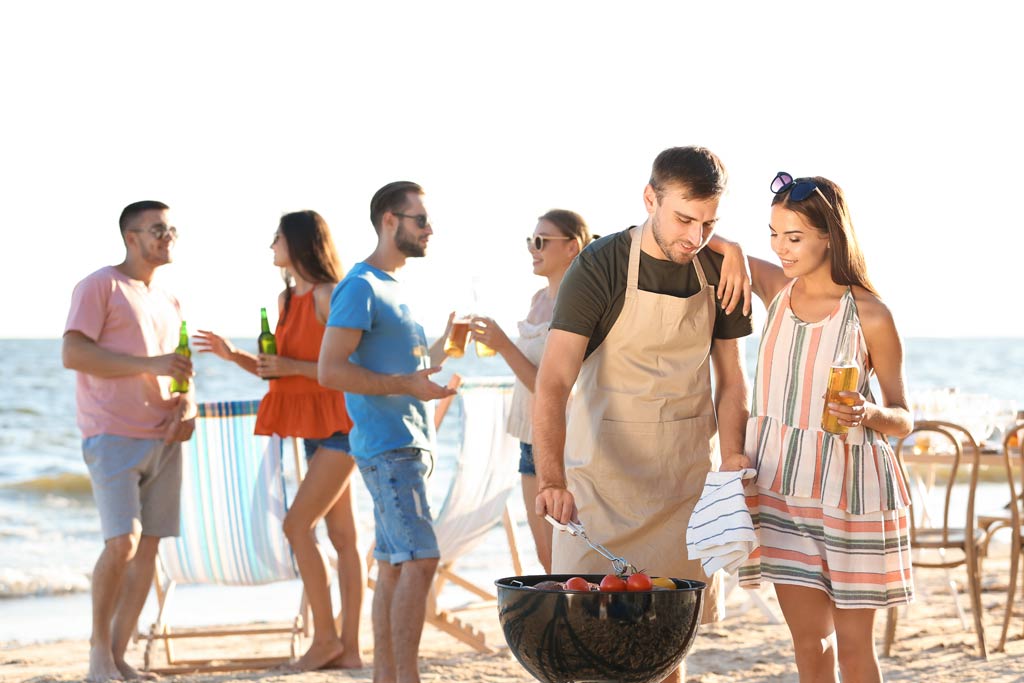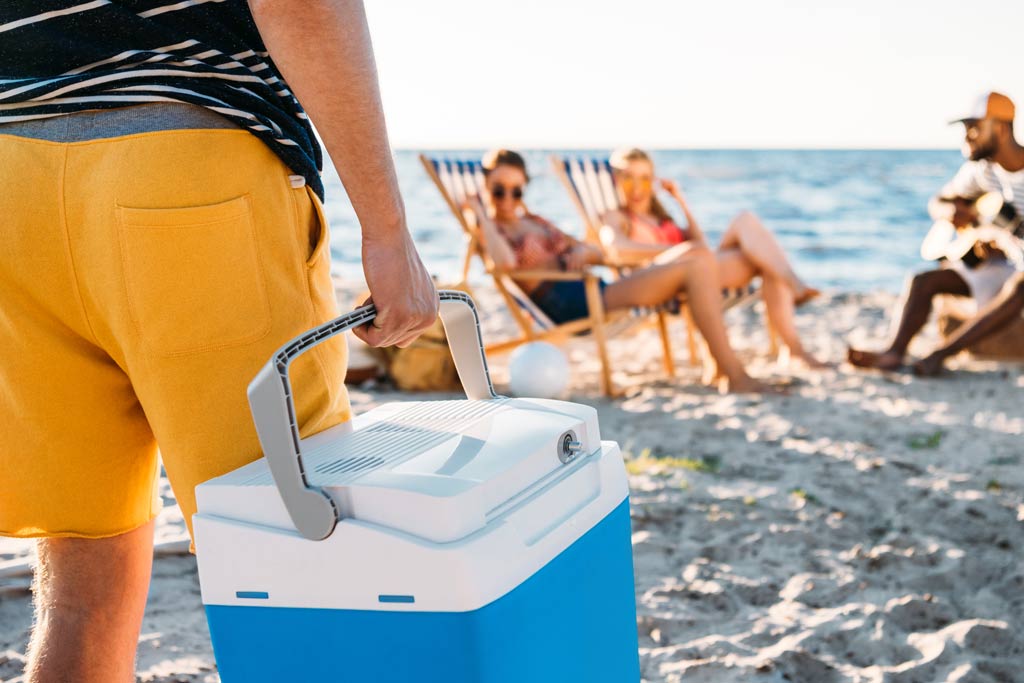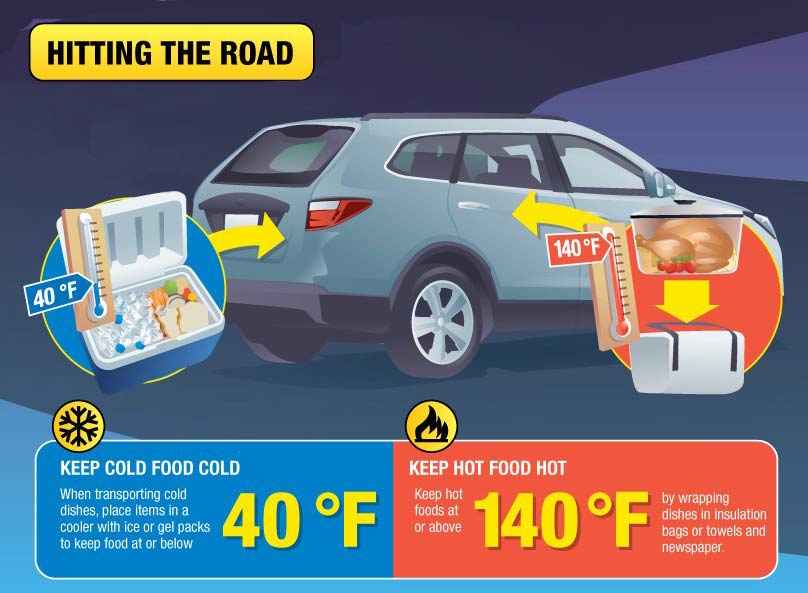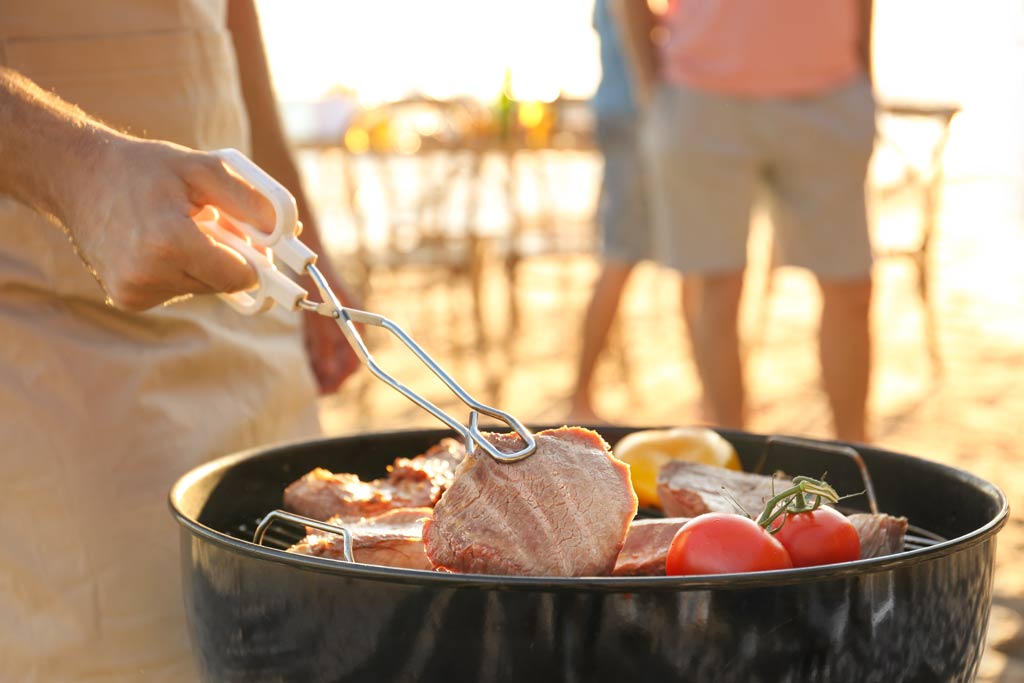Going to the beach? While preparing for the heat on your body – also plan on the effects of heat on your food.
Foodborne illnesses increase during the summer because not only does bacteria multiply faster in warmer temperatures, but preparing food outdoors makes safe food handling more challenging.

Some of the more common culprits of foodborne illnesses include E. coli, salmonella and campylobacter, resulting in a variety of gastrointestinal symptoms, ranging from mild to severe.
Take along only the amount of food that can be eaten to avoid having leftovers. If grilling, make sure local ordinances allow it. Coolers should be partially buried in the sand, covered with blankets and in the shade of a beach umbrella. Bring along moist towelettes for cleaning hands.
- Learn about foodborne hazards and pathogens, cross contamination, temperature controls, cleaning and sanitation methods, and the best practices to prevent foodborne illnesses.
- Food Manager ANSI Certification: SALE $99.00
- Food Handler ANSI Training for only $7.00!
- Enter Promo "train10off" at Checkout
Preparation – Ensure Food Keeps Cold
Stay food safe from the heat at the beach by following these recommendations:
- Pre-chill the cooler from the night before. The cooler body is usually warm at first. So when you put the ice packs inside, a considerable amount of frozen ice is going to defrost because of the coolers body temperature.
- Freeze or Cool Items Prior to Trip. Freeze items that can be frozen at home prior to leaving. Items like juice boxes, hamburger patties, individual chicken breasts and hot dogs can be frozen and can slowly thaw in your cooler for you to use on your trip. Put sodas, jelly and other items that will end up in your cooler in the refrigerator overnight.
- Put the frozen meat and vegetables in the bottom. Cold air goes down. So the bottom parts of the cooler are the coldest parts. Moreover, you don’t want to make your food and other stuff warm by opening the cooler’s door too often.
- A full cooler lasts longer than a half-empty one. You should fill the cooler completely so that the air can not circulate inside. If you just don’t have enough food and drinks, you can freeze water bottles and fill the empty spaces with them.
- Put the regularly used items on top. Put the drinks, dressing, and snacks which you will be grabbing most regularly throughout the day, on top.
- Bring two coolers: Bring one cooler for drinks and snacks and another for perishable food. The drink cooler will be opened and closed a lot, which lets hot air in and causes the ice to melt faster.
- Consider packing easy-to-transport, shelf-stable foods: single-serve boxes of cereal, trail mix, popcorn, single-serve applesauce, cans of tuna peanut butter sandwiches, fresh fruit, carrots or celery.

Food Safety on the Road
- In hot weather, transport food in a cooler (packed with ice or ice packs) in the back seat of an air-conditioned car – instead of the trunk.
- If you don’t have access to a cooler, try packing frozen juice boxes or bottles of water for a hydrating refresher that will also help keep other foods around them cool.
- Consider packing easy-to-transport, shelf-stable foods: single-serve boxes of cereal, trail mix, popcorn, single-serve applesauce, cans of tuna peanut butter sandwiches, fresh fruit, carrots or celery.
- Don’t forget that carry-out and fast-food are also susceptible to food poisoning. Eat fast food within two hours; in hot weather (above 90°F), the time is reduced to one hour.

At Destination – Safe Serving Food Outdoors
When serving food outdoors:
- Keep cooler in shade. A full cooler will maintain its cold temperature longer than a partially filled one. When using a cooler, keep it out of the direct sun by placing it in the shade or shelter.
- Keep cooler closed. Avoid opening the cooler repeatedly so that your food stays colder longer.
- Two hour rule. Perishable food should not sit out for more than two hours. In hot weather (above 90 °F), food should NEVER sit out for more than one hour.
- Smaller portions. Serve cold food in small portions, and keep the rest in the cooler. After cooking meat and poultry on the grill, keep it hot until served – at 140 °F or warmer.
- Cook to minimum safe temperatures. If you plan to cook family favorites like hamburgers, hotdogs or chicken breasts at home to take with on your trip, remember to cook to proper temperatures: hamburgers (at least 160°F), hot dogs (reheated to 160°F), and chicken (165°F).

Steps to Food Safety – Clean, Separate, Cook and Chill
Always remember and practice the four basic steps for food safety:

Clean: Make sure to pack clean paper towels, water, and soap for cleaning surfaces and your hands. Disposable moist towelettes also work well.
Separate: Use clean plates. Likewise, don’t put foods eaten raw on the same platter that held raw meat or poultry. Any harmful bacteria present in the raw meat juices could contaminate them.
Cook: Always use a food thermometer to check the internal temperature of burgers, steaks, chicken and foods containing meat, poultry and egg dishes.
Chill: Place leftovers in shallow containers and store them in a cooler immediately. Discard food left in the Danger Zone for more than two hours. When the outside temperature is 90°F or above this time reduces to just one hour
Additional Outdoor Food Safety Information:
- Barbecue and Food Safety (USDA)
- The Big Thaw—Safe Thawing Methods (USDA)
- Eating Outdoors, Handling Food Safely (FDA)
- Pack a Family Picnic! PDF (299k)(USDA)
